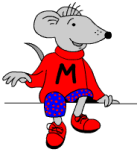Being able to read information from a calendar may seem pretty straightforward to us, but many children do not come across these in their everyday life and hence have problems working out how to extract the information.
The questions here are aimed at boosting a level 3 towards a level 4. For those children aiming at a Level 5 care must be taken to read the tables and charts accurately as they are a good way to pick up easy marks.
 This is a good free maths worksheet to encourage systematic ordering of data. Lists of highest mountains, longest rivers and largest turtles are given, but they are not in order. There is a definite technique in efficiently putting these in order as it is very easy to miss one and not so easy to rearrange them if you are doing it on paper!
This is a good free maths worksheet to encourage systematic ordering of data. Lists of highest mountains, longest rivers and largest turtles are given, but they are not in order. There is a definite technique in efficiently putting these in order as it is very easy to miss one and not so easy to rearrange them if you are doing it on paper! We usually think of the terms convex and concave in relation to mirrors and lens. The word convex means curving out or bulging out but it can also be applied to polygons. A convex polygon is one where all the internal angles are less than 180 degrees – the type that we are most familiar with. A concave polygon will have an interior angle greater than 180 degrees – it looks as if it has been pushed in on one side.
We usually think of the terms convex and concave in relation to mirrors and lens. The word convex means curving out or bulging out but it can also be applied to polygons. A convex polygon is one where all the internal angles are less than 180 degrees – the type that we are most familiar with. A concave polygon will have an interior angle greater than 180 degrees – it looks as if it has been pushed in on one side. Children in the UK get far less experience at using kilometres than most Euoropeans because we have decided to keep with the mile for most of our longer measuring. Of course this is a nonsense: to start with a system using mm, cm and metres and then switch to a completely different system ie miles does not make any sense at all! Until our road signs are changed there is little hope of any improvement in this situation.
Children in the UK get far less experience at using kilometres than most Euoropeans because we have decided to keep with the mile for most of our longer measuring. Of course this is a nonsense: to start with a system using mm, cm and metres and then switch to a completely different system ie miles does not make any sense at all! Until our road signs are changed there is little hope of any improvement in this situation. I will be concentrating on these maths worksheets for the next couple of weeks. For many children just a few extra marks can raise their level from a 3 to a 4 or a 4 to a 5. I’m not sure what it all means in the wider world but it is certainly good for children’s self confidence if they can get that higher level. The worksheet below is further practice at logical thinking.
I will be concentrating on these maths worksheets for the next couple of weeks. For many children just a few extra marks can raise their level from a 3 to a 4 or a 4 to a 5. I’m not sure what it all means in the wider world but it is certainly good for children’s self confidence if they can get that higher level. The worksheet below is further practice at logical thinking.